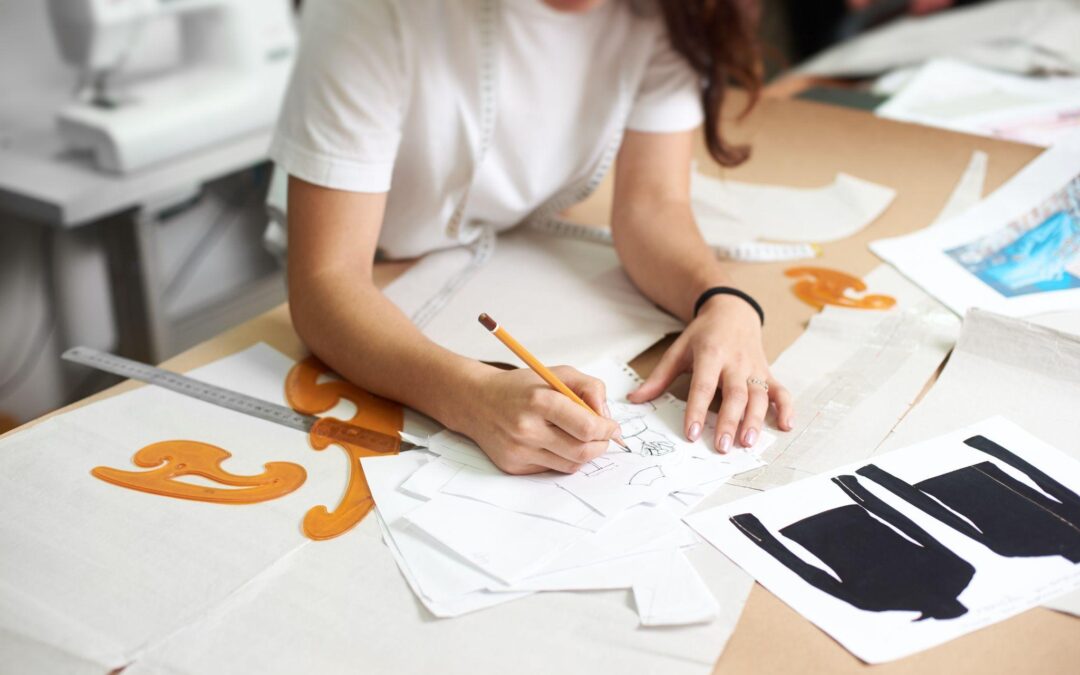
by Purba | Aug 30, 2024 | Shout out |
In the fast-paced world of fashion, staying ahead of trends and maintaining a distinct creative voice is essential. With the rise of digital tools, designers now have more resources than ever to bring their visions to life. Adobe Express, a versatile and user-friendly platform, offers fashion designers the perfect blend of creativity and efficiency. This powerful tool enables designers to create, edit, and share their work seamlessly, making it a game-changer in the industry. As the lines between fashion and technology continue to blur, Adobe Express stands out as an essential tool for designers looking to innovate and inspire.
Streamlining the Design Process
Fashion design is often a complex process, requiring meticulous attention to detail and a deep understanding of visual aesthetics. Adobe Express simplifies this process by offering a range of intuitive features that allow designers to create stunning visuals with ease. Whether it’s sketching initial concepts, refining designs, or creating mood boards, Adobe Express provides the tools needed to streamline these tasks. The platform’s ease of use means designers can focus more on their creativity and less on the technicalities. This efficiency not only saves time but also enhances the overall quality of the design work.
Enhancing Visual Communication
In fashion, visual communication is key. Designers must convey their ideas clearly and compellingly to clients, collaborators, and consumers. Adobe Express allows designers to create visually striking presentations that communicate their concepts effectively. The platform’s wide array of templates, fonts, and design elements make it easy to craft polished presentations that showcase a designer’s unique style. By using Adobe Express, designers can ensure that their visual communication is as impactful as their designs, leaving a lasting impression on their audience.
Creating Engaging Social Media Content
Social media has become an indispensable tool for fashion designers to showcase their work and connect with their audience. Adobe Express makes it easy to create eye-catching social media content that stands out in a crowded digital space. Designers can use the platform to design Instagram stories, promotional graphics, and even short videos that reflect their brand’s identity. With its user-friendly interface and vast library of assets, Adobe Express allows designers to maintain a consistent and professional online presence. This helps in building a strong brand image and engaging with a global audience.
Collaborating with Teams
Fashion design is often a collaborative effort, involving input from various stakeholders, including stylists, photographers, and marketers. Adobe Express facilitates this collaboration by allowing designers to share their work easily and get real-time feedback. The platform’s cloud-based system means that teams can work together seamlessly, regardless of their location. This level of collaboration ensures that everyone involved in the project is on the same page, leading to a more cohesive final product. Adobe Express, therefore, not only enhances the creative process but also fosters a more efficient and harmonious working environment.
Adapting to Market Trends
The fashion industry is constantly evolving, with trends changing rapidly. Adobe Express helps designers stay ahead of these trends by offering tools that allow for quick adjustments and updates to designs. Whether it’s tweaking a color scheme to match the latest runway trends or adapting a design for different markets, Adobe Express provides the flexibility needed to stay relevant. This adaptability is crucial for fashion designers who must constantly innovate to meet the demands of an ever-changing market. With Adobe Express, designers can easily keep their work fresh and aligned with current trends.
Expanding the Designer’s Toolkit
Adobe Express is more than just a design tool; it’s a gateway to a vast array of creative possibilities. The platform integrates seamlessly with other Adobe products, such as Photoshop and Illustrator, allowing designers to expand their toolkit and push their creativity further. This integration means that designers can easily transition from sketching a concept in Adobe Express to refining it in Photoshop or Illustrator. By offering such versatility, Adobe Express empowers designers to explore new creative avenues and produce work that is both innovative and visually stunning. This expansion of the designer’s toolkit is essential in an industry where originality is key.
As the fashion industry continues to embrace digital transformation, tools like Adobe Express are becoming indispensable for designers. The platform’s combination of ease of use, powerful features, and adaptability makes it an essential resource for modern fashion designers. By leveraging Adobe Express, designers can streamline their workflow, enhance their visual communication, and stay ahead of trends, all while expanding their creative possibilities. In this new era of fashion design, Adobe Express stands out as a tool that not only supports the creative process but also elevates it to new heights. The future of fashion is digital, and Adobe Express is leading the way.
You may also want to read:
How Fashion Designers and Other Creatives Can Get Noticed‘
How Much Do CLO3D Designers Make?
How Much Do Fashion Designers Make? Unveiling the Earnings of Creative Minds
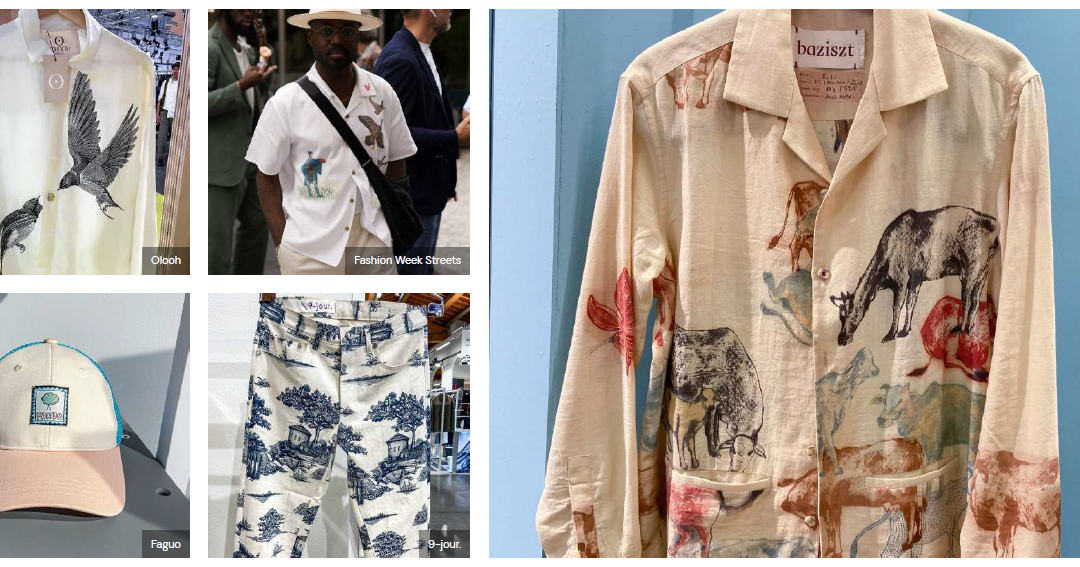
by Purba | Apr 4, 2024 | Academic, Top Trends |
As we delve into the Spring/Summer 2024 season, there’s a noticeable shift towards an artistic and crafted feel, emphasizing connection and self-care. This report serves as a guiding light for your buying strategy, offering insights into the trends shaping the fashion landscape.
This trend report is by Rose Hudson, published in WGSN. Fashionnovation is proud of collecting the works from WGSN and present them towards you.
Editor’s pick: crafted patterns
As consumers increasingly gravitate towards building sustainable and personalized wardrobes, brands are tapping into traditional crafting techniques to meet this demand. From block printing to direct-to-garment painterly patterns, and even drawing inspiration from #Tapestry influences, there’s a resurgence of interest in artisanal methods.
Building upon last season’s trend of repurposed materials, the current focus shifts towards authenticity. This authenticity is not only reflected in the choice of techniques but also resonates throughout street style. Brands are embracing the beauty of handmade craftsmanship and the unique character it brings to each piece.
By incorporating these traditional crafting techniques into their collections, brands are not only contributing to sustainability but also offering consumers a chance to express their individuality through their clothing. It’s a celebration of heritage, craftsmanship, and the timeless appeal of handmade designs. 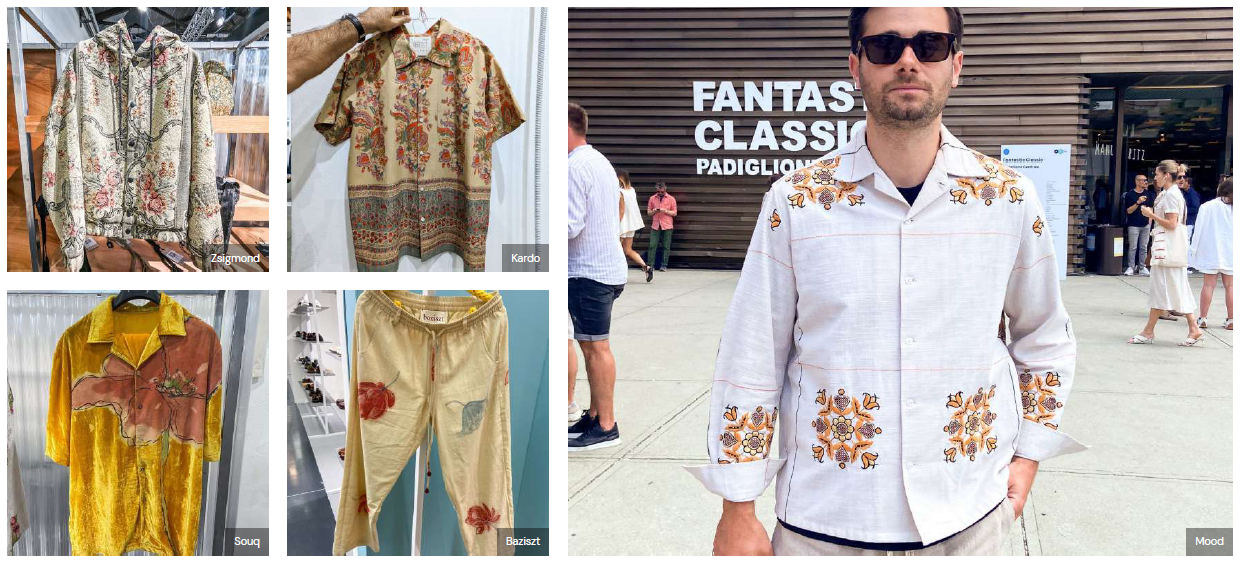
Figure 1: Crafted pattern is a major trend in 2024
Personal connection
In today’s fast-paced world, there’s a growing emphasis on self-care and reflection. Brands are responding by incorporating people-centric prints aimed at promoting self-acceptance and inclusivity. These prints are designed to resonate with individuals on a deeper level, fostering a sense of connection and belonging in line with the expanding self-care market.
Drawing inspiration from calming and feel-good themes, these prints aim to create a sense of wellness and serenity. By tapping into our Serenity & Self-Care Fast Track, brands are aligning with the growing demand for products that prioritize mental and emotional well-being.
Moreover, these prints also embrace the concept of body neutrality, emphasizing acceptance and appreciation of all body types. By promoting messages of self-love and inclusivity, brands are not only staying relevant but also contributing to a more positive and uplifting fashion landscape.
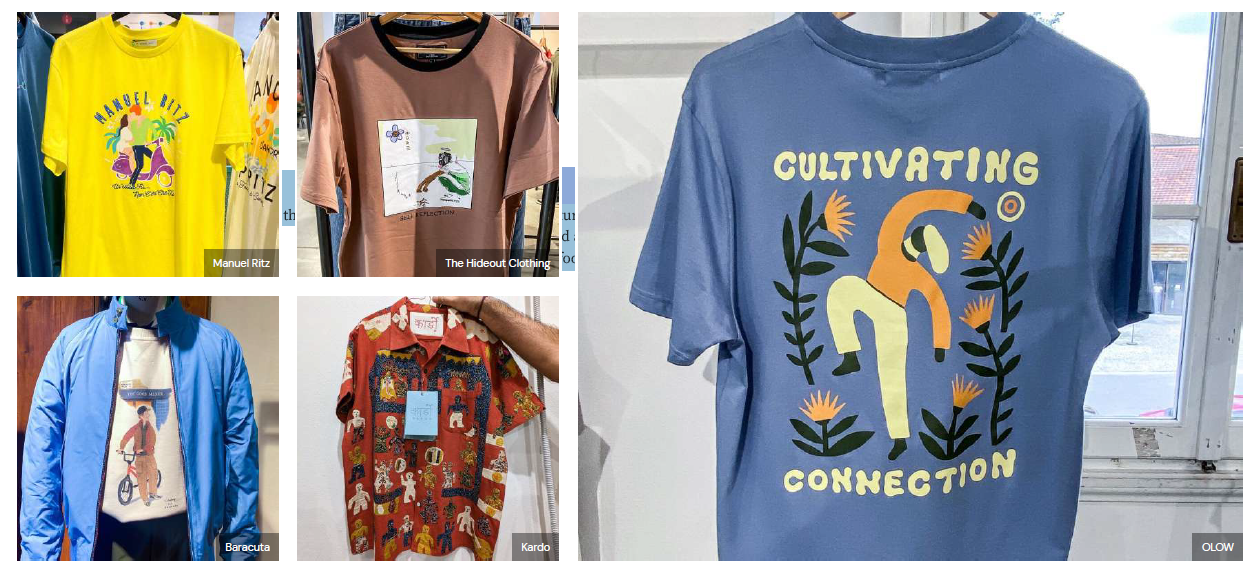
Figure 2: Personal connection is always a famous trend. Even in 2024. This is classic.
Pastoral parklife
#ParkLife encapsulates the revival of everyday countryside aesthetics and pastoral animal motifs, including ducks, horses, butterflies, and various bird species. This trend exudes a rustic, nostalgic charm with a distinctively handcrafted feel.
Fuelled by the surge in upcycling deadstock fabrics like tapestries and vintage tea towels, #ParkLife incorporates landscape #ToileDeJouy prints, illustrated placements, and artistic renditions. These elements contribute to a sense of authenticity and craftsmanship, adding depth to the overall aesthetic.
For the more traditional consumer, key motifs such as #Birds and horses take center stage, evoking a sense of timeless elegance. Meanwhile, younger consumers are drawn to the inclusion of pastoral animals such as goats and cows, infusing a playful and contemporary twist into the design narrative.
Embrace the charm of #ParkLife in your wardrobe or home decor, and immerse yourself in the beauty of countryside-inspired motifs and handcrafted detailing.
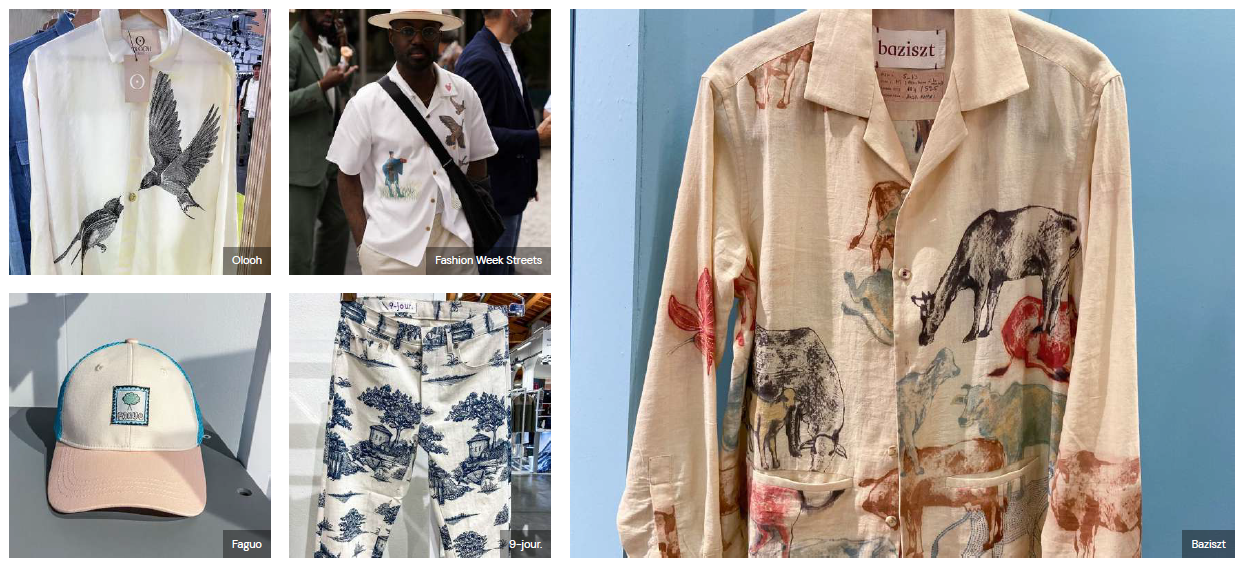
Figure 3: Pastoral parklife trend-2024.
Mineral textures
Texture prints are evolving with a sophisticated and mineral-inspired edge, incorporating intricate digitalized prints and dye patterns that redefine #NaturesTexture. Drawing inspiration from our digital waves callout, exhibitors are exploring textures found in ice and water, seeking to capture the dynamic and mesmerizing qualities of these natural elements.
Innovative brands like Hul Le Kes from the Netherlands and Pas Une Marque from France are leading the charge by developing prints crafted with natural dyes derived from rust. This innovative approach not only adds depth and richness to the prints but also aligns with the growing demand for sustainable and eco-friendly practices in fashion.
With a focus on texture and detail, these prints offer a contemporary take on nature-inspired motifs, inviting consumers to connect with the beauty and complexity of the natural world in new and unexpected ways. 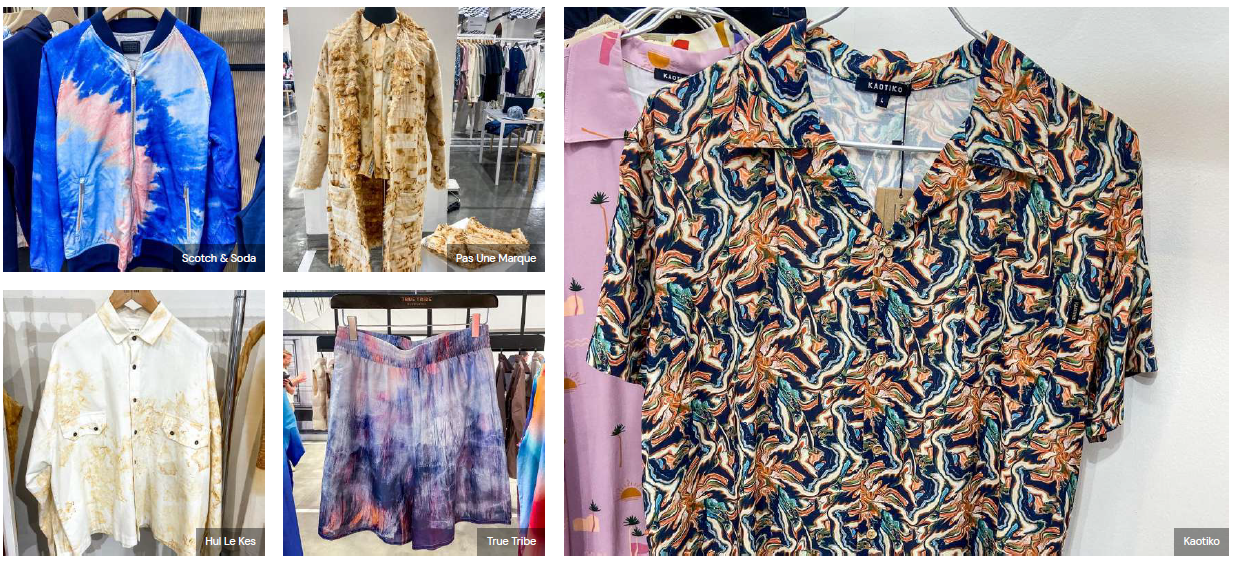
Figure 4: Mineral Texture Trend-2024
Botanicultural
The growing appreciation for nature and the rise of self-care hobbies like gardening serve as the inspiration for this important print and graphic narrative. As arts and crafts become increasingly integrated into the menswear market, #CraftedDetails and #Personalization take center stage, expanding on the #Horticool themes with a DIY aesthetic.
Think of embroidered floral motifs and vintage inspirations that evoke a sense of nostalgia and eco-consciousness. These elements create a connection to our Spring/Summer 2024 capsule collection, Nature Artist, which celebrates the beauty of the natural world through artistic expression.
With a focus on handcrafted details and personalized touches, this trend invites individuals to infuse their wardrobe with elements of nature and creativity. Whether it’s adding embroidered patches to a denim jacket or customizing a shirt with botanical prints, #CraftedDetails and #Personalization offer a unique and meaningful way to connect with nature in everyday life.
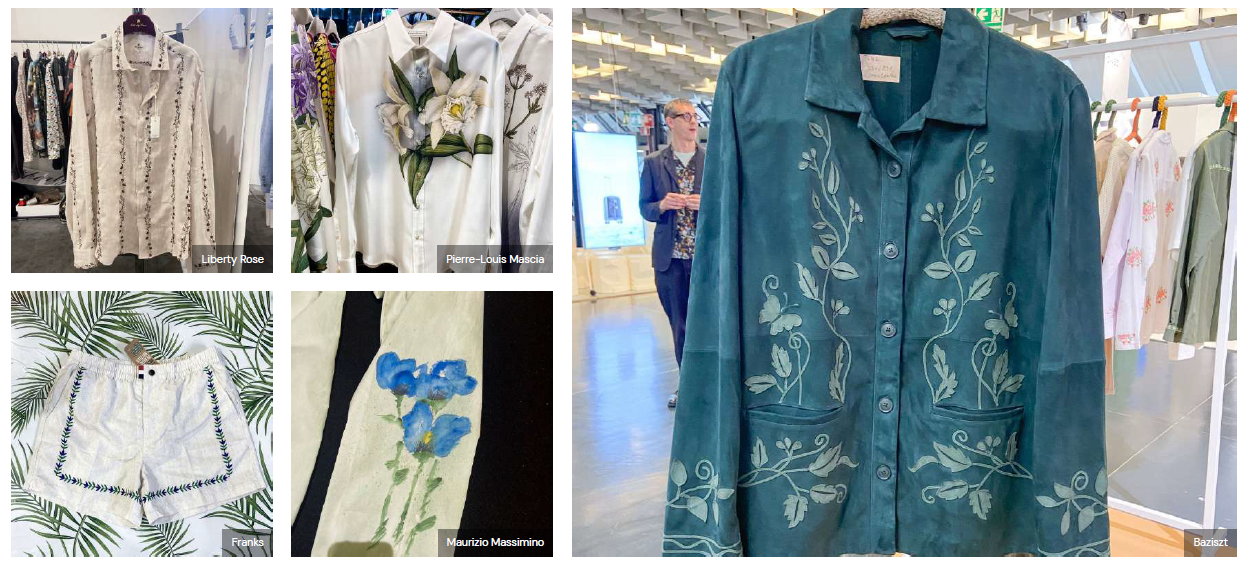
Figure 5: Botanicultural trend 2024.
Sunset snacks
The emergence of #FoodInFashion and #DrinksInDesign motifs has caught our attention, tying into our Self-care snack forecast story. These trends evoke a hedonistic vibe, expanding on party room themes to encompass after-work drinks and foods that encourage relaxation and the enjoyment of life’s simple pleasures.
While comfort food continues to hold relevance, there’s a shift towards healthy summer harvest themes. Think vibrant fruit labels and personified cartoon characters adorning clothing and accessories, adding a playful and refreshing touch to fashion.
This trend celebrates the joy of indulging in delicious treats and savoring moments of relaxation, whether it’s unwinding with a refreshing drink or enjoying the bounty of summer fruits. With #FoodInFashion and #DrinksInDesign, fashion becomes a feast for the senses, inviting individuals to embrace the hedonistic side of life and indulge in a little culinary-inspired style.
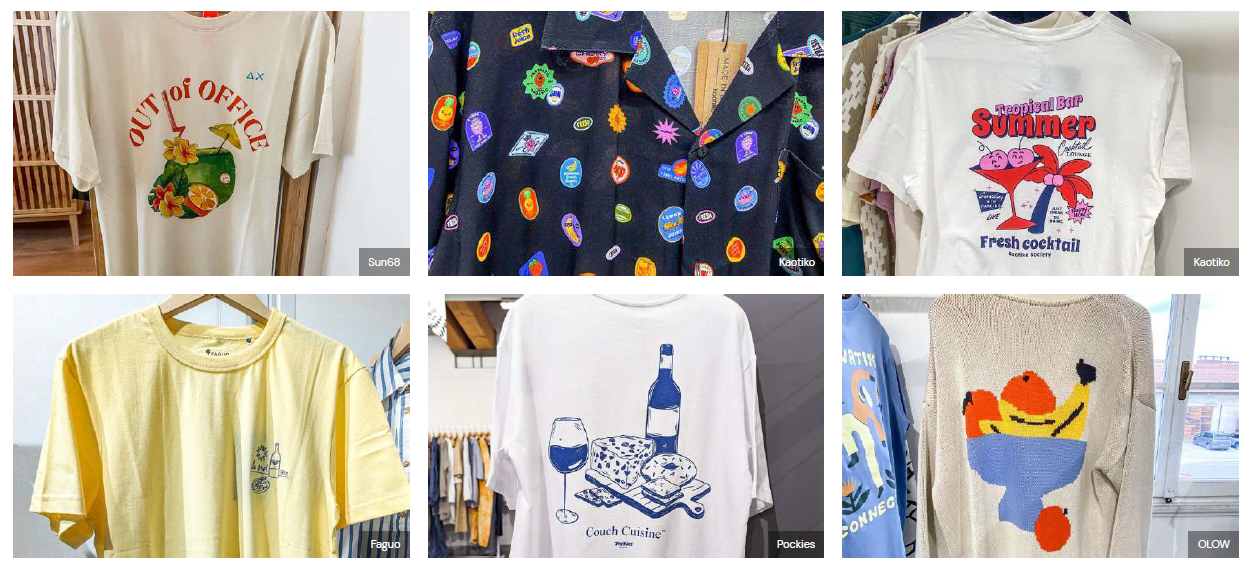
Figure 6: Sunset snacks trends 2024
Artistic maritime
In harmony with the artistic atmosphere of the season, timeless maritime trends receive a contemporary update with the use of #Watercolour and #PainterlyPattern techniques, perfectly in line with our Vacation moments forecast trend. This direction embraces a narrative approach, reminiscent of journaling and storytelling, connecting to #SummerSketchbook scenes and evoking nostalgia for charming destinations.
Imagine hand-painted fish motifs and scenic landscapes that transport you to idyllic coastal retreats. These elements come together to create a bolder and more expressive feel, as seen in the designs of French brand OLOW.
With #Watercolour and #PainterlyPattern techniques, fashion becomes a canvas for capturing the essence of summertime adventures and seaside memories. It’s about embracing the artistic spirit and infusing your wardrobe with the beauty of hand-drawn details and picturesque vistas.
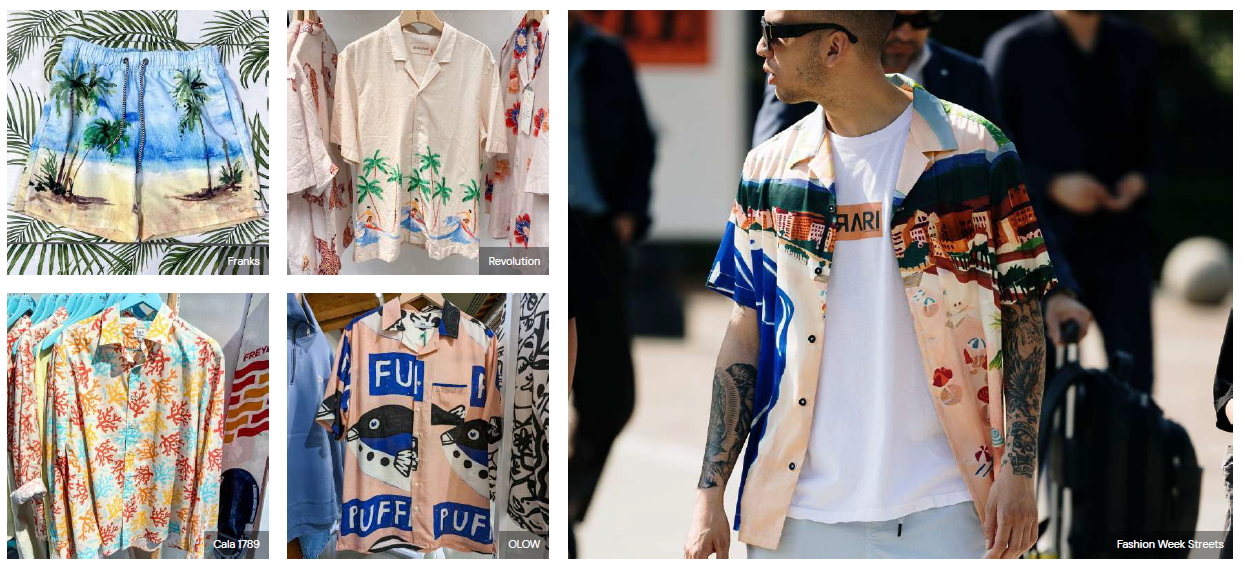
Figure 7: Artistic maritime trend 2024
Vibrant vacay
High summer prints burst with energy, capturing the vibrant essence of a vacation with electric garden florals and distorted dye patterns in vivid colors. Denmark’s ISNURH exemplifies the potential of Kornit digital printing capabilities, showcasing the remarkable color intensity achievable with biodegradable ink.
These prints evoke a sense of excitement and adventure, transporting wearers to sun-drenched destinations and lively tropical landscapes. Whether it’s bold floral motifs or abstract patterns reminiscent of swirling ocean waves, these designs infuse summer wardrobes with a burst of vitality and dynamism.
For further exploration, be sure to explore our Dopamine Summer design capsule, where you’ll find even more exhilarating prints and innovative techniques to elevate your summer style to new heights.
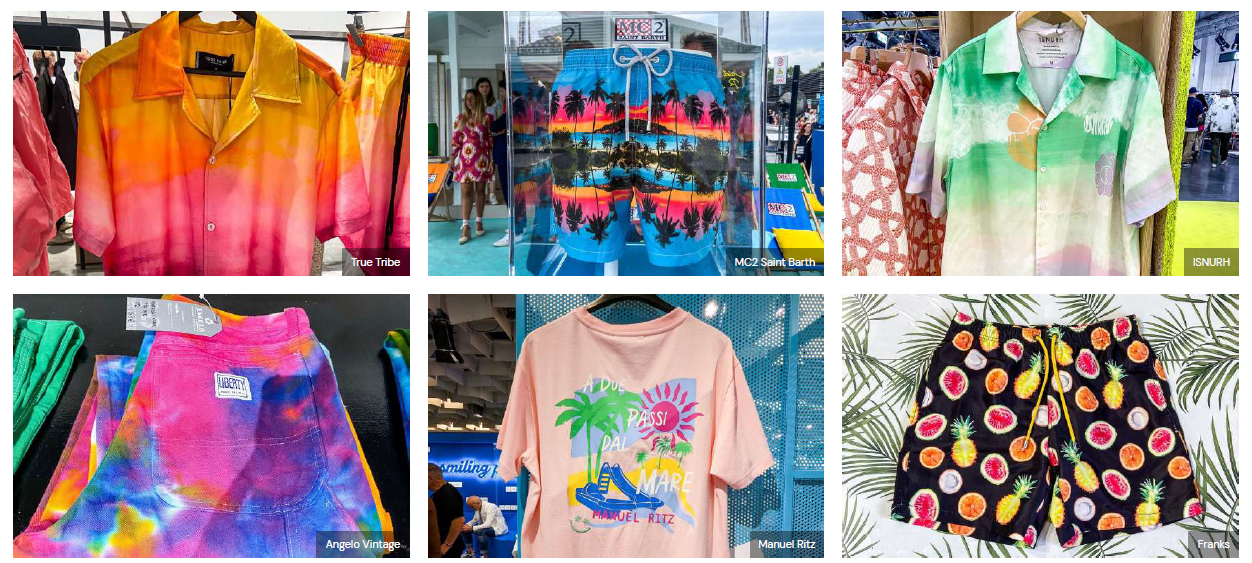
Figure 8: Vibrant vacay trend 2024
Barely there tonal
In the midst of busy and playful fashion ranges, #LowKeyLuxury collections offer a serene and understated elegance. We’ve been observing the evolution of #ToneOnTone prints, noting their transition into barely-there renditions, offering a subtle alternative to fabric interest items.
To achieve this minimalist aesthetic, consider circular monomaterial techniques such as same-thread embroidery, laser cutting, and delicate broderie. These methods create subtle textures and patterns that add depth without overwhelming the design.
Additionally, opt for water-based inks, which have a lower environmental impact compared to traditional printing methods. By prioritizing sustainability and simplicity, #LowKeyLuxury collections offer a refined and mindful approach to fashion, allowing individuals to express their style with quiet confidence.
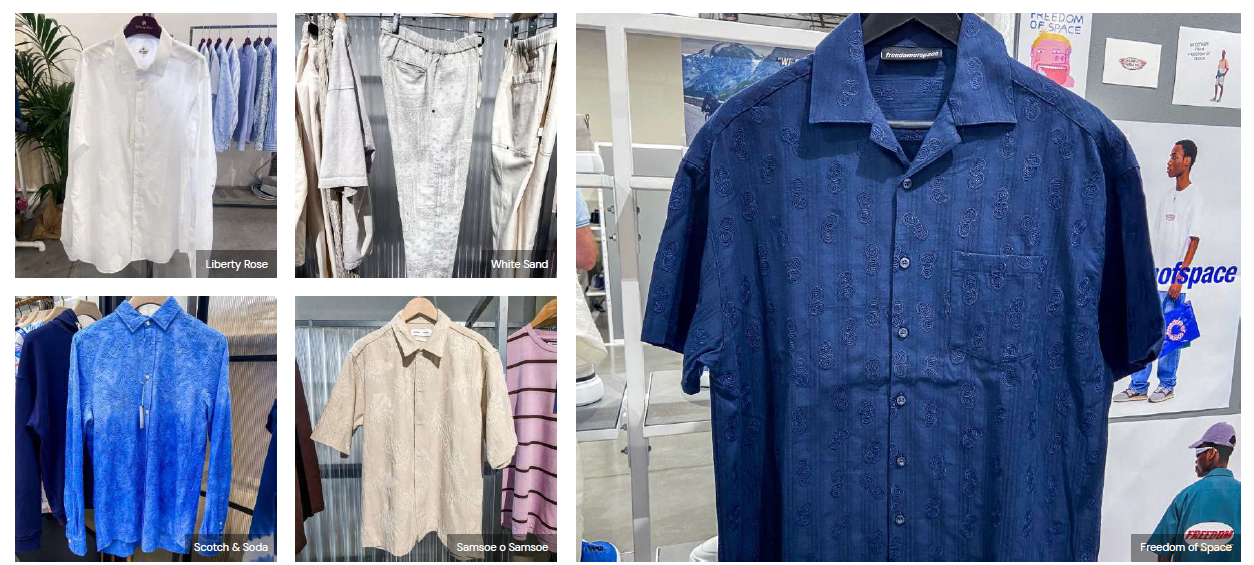
Figure 9: Barely there tonal trend 2024
Nautical collage
In a celebration of #JoyfulExpression and nautical themes, irregular shapes mingle with carefree motifs in stamped and blocked iterations. Brands embrace the trend of #CutoutPrints, incorporating scrap collage techniques to update traditional nautical motifs and sun prints with a playful twist.
These designs evoke a sense of joy and spontaneity, inviting wearers to embrace their adventurous spirit and express themselves freely. Whether it’s whimsical sea creatures or abstract shapes reminiscent of waves, these prints add a touch of lightheartedness to summer wardrobes.
The woven #ResortShirt emerges as a key silhouette to watch, with its projected growth supported by data from our UK and US TrendCurve+. With its relaxed fit and versatile styling options, the resort shirt promises to be a staple piece for those seeking effortless summer style.
Embrace the spirit of joyful expression and playful nautical motifs this season, and let your wardrobe reflect the carefree vibes of summer.
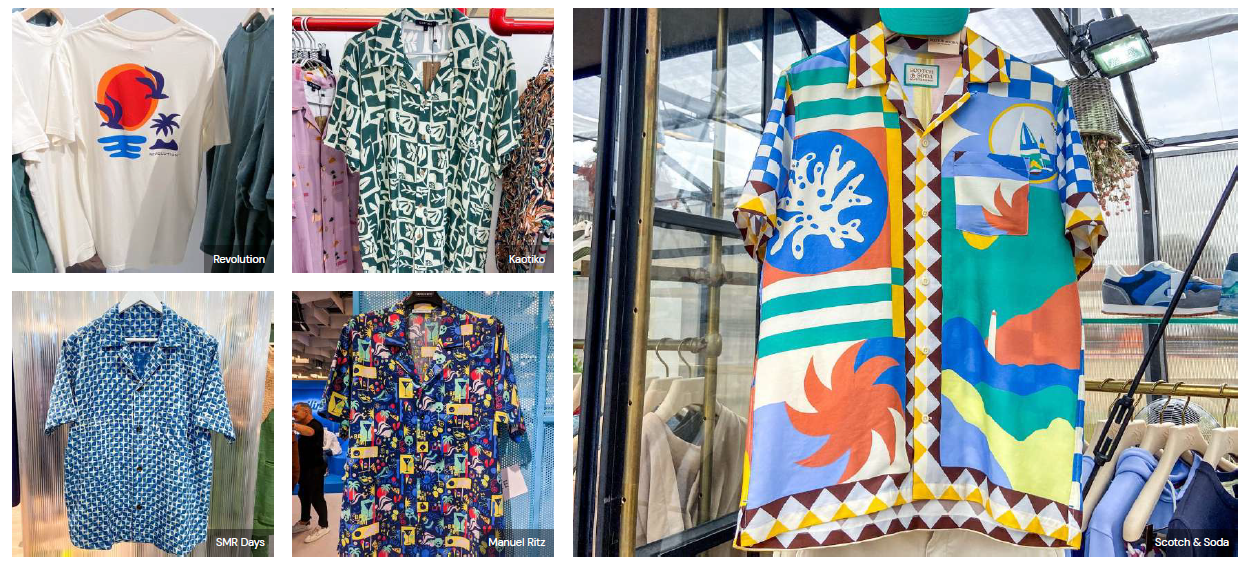
Figure 10: Nautical collage trend 2024
For more of our Fashion Trend knowledge bank:
We have a rich repository and knowledge bank of Fashion Trends, to read them you can click the following:
Men’s Elegance Unveiled: London Fashion Week S/S 24 Blends Modern Romance and Soft Grunge Trends
10 Hottest Lehengas for Women Trends for 2023-24
Top 5 Picks from RIHOAS that You Must Bag to Catch Up With the 2023 Fashion Trends
2023 Fashion Trends: 10 Biggest Fashion Trends of 2023
Trend Analysis and Fashion Trends of 2019
2023 Fashion Trends: 10 Biggest Fashion Trends of 2023
3 Trendy Casual Shirts You Should Buy for This Christmas!
Bimbo Fashion: Bimbo Trends, Bimbo Brands, Bimbo Clothing, Where to Buy and All You Need to Know!
Spring Summer 2022 Fashion Trends That You Can Understand From Watching The Fashion Shows
Fashion Trends 2021
Fashion in the 21st Century
The World of Mushrooms: Nature’s Palette for Fashion Inspiration
Feel free to write us at fashionnovationfd@gmail.com
We check your emails and publish your articles!
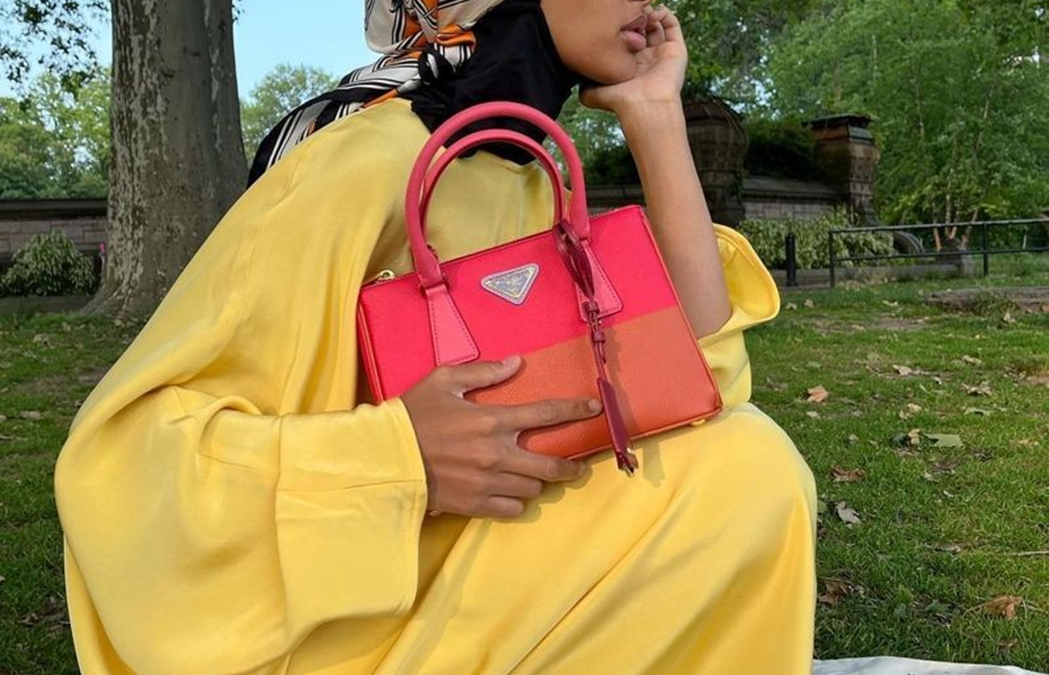
by Purba | Apr 4, 2024 | Uncategorized |
Modestwear is a growing section in the fashion industry and “Modestwear trends 2024” is one of the mostly sought search term of many fashionistas both for personal and business interests. To quench this thirst, WGSN is a one stop, exclusive and the most trusted source for knowing what’s coming in the fashion industry. But WGSN’s trends are subscription based and exclusive. To save you money and time of searching for trends here and there, Fashionnovation is presenting you some sneak picks from WGSN’s exclusive forecasts to action for the modest consumer across apparel and accessories. The trends are prepared by Laura Yiannakou, Sthandiwe Khumalo, Kim Cupido & Raeesa Brey for WGSN. Fashionnovation is proud to showcase their forecast trends on Modestwear 2024 by WGSN. Without further ado, let us dive in!
This trend report of Modestwear 2024 identifies design and buying priorities for modestwear for 2024, curating our existing forecasts to action for this consumer.
Opportunity: growth is forecast for the modest fashion market but consumer needs are evolving fast.
Key areas to optimise include:
- Everyday-wear suitable for Ramadan – the ninth month of the Islamic calendar, observed by Muslims worldwide as a month of fasting, prayer, reflection and community
- More flexible occasionwear
- Comfortable/performance-led vacationwear
Need to know: Modest fashion spend is forecast to reach $375bn by 2025 at a four-year CAGR of 6.1% according to the State of the Global Islamic Economy report 2022.
Event-driven purchasing: Apparel continues as a key spending area around Muslim calendar dates, with 77% of Asian and 64% of European respondents citing it as a spending priority during Ramadan in a TGM Research survey.
Modern travel needs: according to the Global Muslim Travel Index 2022 the three demographics driving the most growth in travel are women, Millennials and Gen Z. Expect demands to increase for modest travel and vacationwear. Prioritise lightweight, sun-protective and climate-adaptive performance.
Figure 2: Modestwear trends-2024. Source: WGSN.
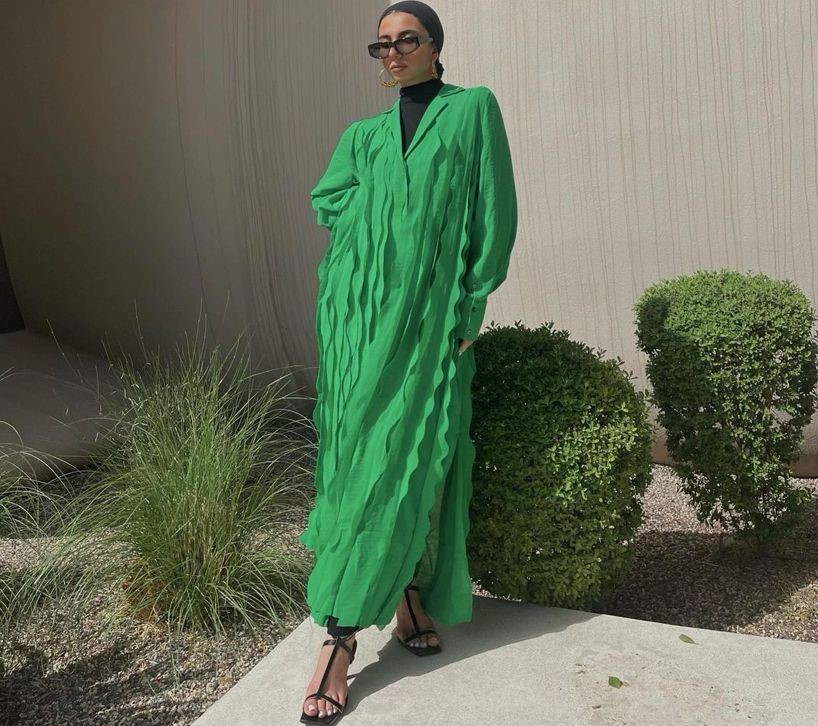
@ranim.alrifai

@fashionwithfaith
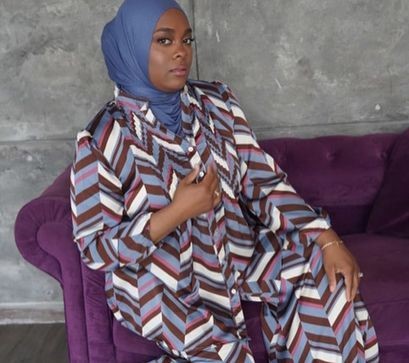
@styledbyzubaidah
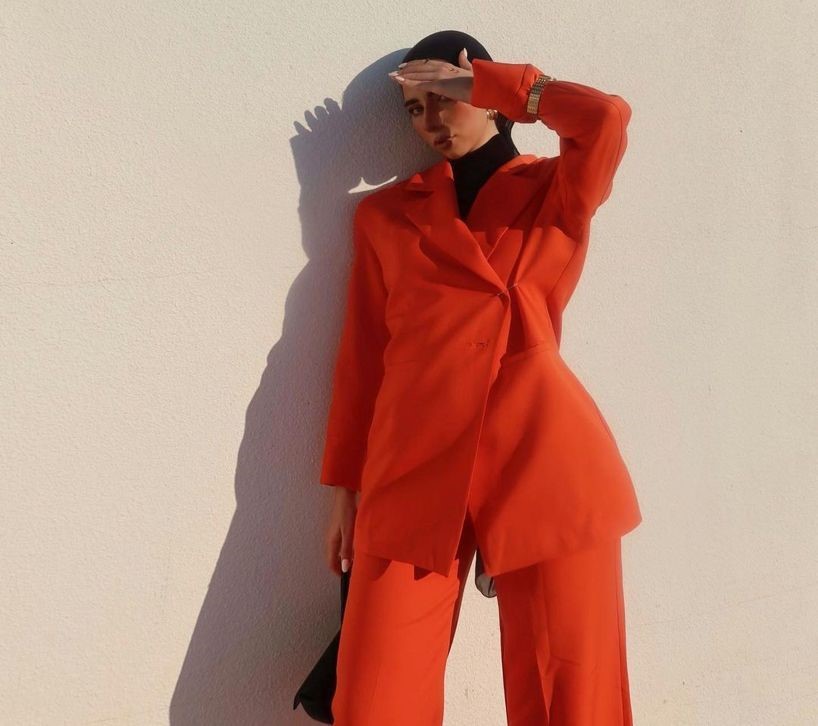
@ranim.alrifai
There are three action points for modestwear design priorities
- Invest in items with longevity, that can be worn for multiple end-uses
- Focus on smarter product phasing and cross-category merchandising over limited appeal capsules
- Invest to understand regional modestwear requirements
As we embrace Ramadan and the everyday hustle, it’s essential to think smart about our wardrobe choices, especially when it comes to modest wear. We’re looking for pieces that seamlessly transition from home to the office and then to Iftar gatherings, without compromising on style or comfort.
First things first, let’s talk about comfort casuals. Think practicality meets style. We’re talking about comfy, easy-to-layer pieces that can handle the demands of Ramadan. Look out for items like a versatile stealth wealth set, cozy pyjama-inspired outfits (#BoudoirDressing for the win!), breathable tunics, elevated hoodies, oversized tops, woven joggers, and leggings that feel like a second skin.
Now, onto footwear. With regular prayer calls, we need shoes that are not just comfortable but easy to slip on and off. Mary Janes, ballet flats, slides, and sneakers without laces are our go-tos.
For those days when we’re transitioning from the office to Iftar, we need pieces that can effortlessly switch gears. Lightweight trenches, soft blazers, dresses that double as tops, work-leisure dresses, boho blouses, classic shirts, maxi skirts, and cargo trousers are your office-to-Iftar essentials.
Accessories can take your outfit from ordinary to extraordinary. Think detachable corsages, statement chains, elegant brooches, customizable embellishments, eye-catching earrings, wristwear, belts that make a statement, and printed scarves that add a pop of color.
And let’s not forget about staying cool in the hustle and bustle of the day. Opt for fabrics like cotton, silk, linen, regenerated cellulosics, and high-tech synthetics that regulate temperature. Look for qualities like #Secondskin and #Bodywear for everyday comfort.
With these tips in mind, you’ll be Ramadan-ready and everyday chic, no matter where the day takes you!
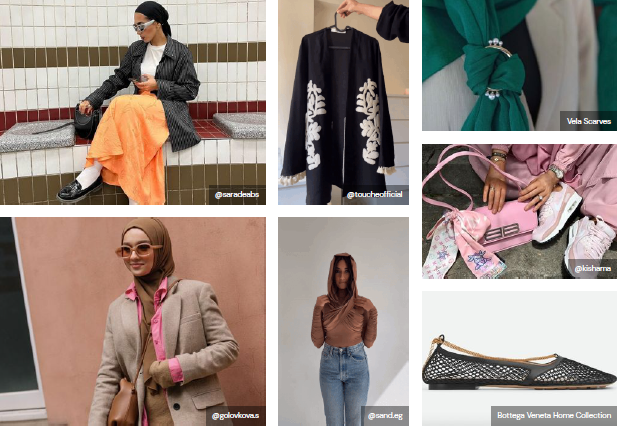
Figure 3: Ramadan everyday modestwear. Source: WGSN.
Influences
Vela scarves, Inrea, Levi’s, ameenaroshae, Haya and I have some influencing styles to look for.
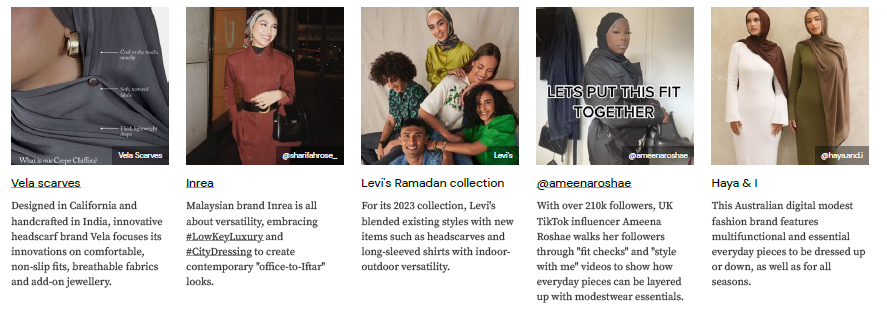
Eid al-Fitr and Eid al-Adha modestwear trends-2024
As we approach Eid al-Fitr and Eid al-Adha, there’s a noticeable shift towards more conscious and adaptable occasionwear. People are looking for outfits that not only celebrate the festivities but also align with ongoing trends towards casualization.
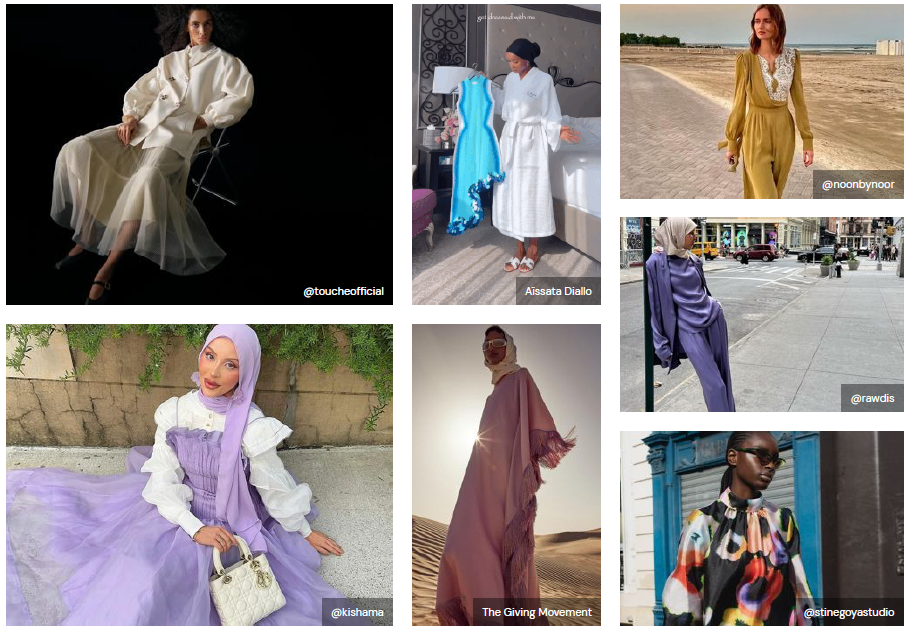
Figure 4: Eid-ul Fitr and Eid-ul adha trend 2024. Source: WGSN
It’s important to steer clear of creating tokenistic capsule collections. Instead, focus on re-commerce and modifying existing ranges to meet the evolving needs of the market. Hiring market experts with experience in modestwear design can offer invaluable insights into the specific requirements of this niche.
When it comes to design, consider scaling back on maximalist trims, prints, and embellishments. Instead, offer more versatile pieces that can be layered over or under other items, or easily elevated with the right accessories. Look out for key items like full skirts, maxi skirts, boho dresses, column dresses, #ElegantSimplicity dresses, fluid blouses, draped tops, ruffle-trimmed overcoats, and plissé top and trouser sets.
Market your collections by showcasing multiple ways to wear them. Consider creating #Layering tutorials demonstrating various outfit builds, and share Get Ready With Me (GRWM) reels to engage with your audience. Take inspiration from successful approaches like Twiice Boutique in Australia and collaborate with influencers to demonstrate styling opportunities. Additionally, tapping into insights from reports like the Gen Z: Muslim Digital Behaviours can provide further ideas for marketing strategies tailored to your target audience.
Eid al-Fitr and Eid al-Adha are occasions of joy and celebration, and with the right approach to occasionwear, you can ensure that everyone feels confident and stylish during these special times of the year.
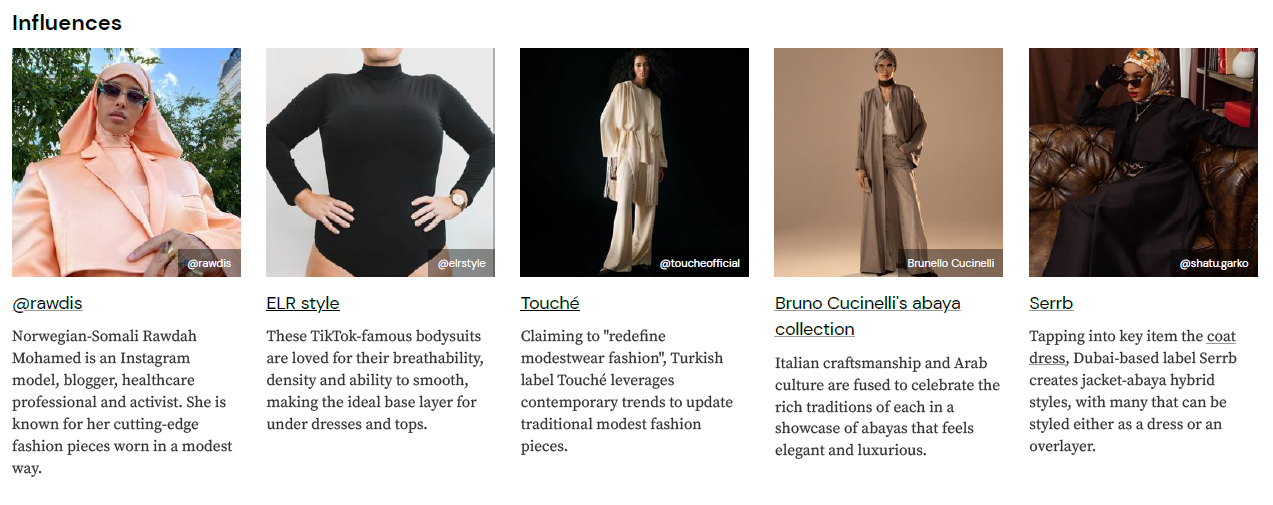
Figure 5: Influences for Eid-al fitr and Eid-al adha. Source: WGSN.
Travel and resortwear modestwear trends-2024
Let’s make summer styling a breeze by crafting #TravelFriendly pieces that blend lightweight fabrics with modest silhouettes, ensuring comfort and breathability wherever your adventures take you.
In response to the growing trend of minimizing luggage, our focus is on cabin-bag-friendly clothing that’s both practical and stylish. We’re talking about fuss-free, interchangeable vacation wear that’s light on weight and space. Think crease-free, modular, and packable garments that are perfect for wearing both on the journey and at the destination. Look out for essentials like lightweight cargo trousers, versatile packable travel sets, beach-to-business shirts, #SummerSensuality dresses, resort maxis, and city-to-beach trousers.

Figure 6: Modestwear prevails in travel and resortwear too. Source: WGSN.
Investing in good-coverage lightweight fabrics is key. Not only do they provide the necessary level of skin coverage for modesty and sun protection, but they also offer comfort in rising global temperatures. We’re prioritizing climate-adaptive styles and cooling fibers, especially in active, swim, and cover-up pieces that excel in both fashion and performance. Keep an eye out for protective sun tops, layering tanks, and rash suits to stay cool and protected under the sun.
With these #TravelFriendly summer pieces in your wardrobe, you can jet off to your favorite destinations with ease, knowing you’re prepared for any adventure that comes your way.
Influences for travel and resortwear trend 2024
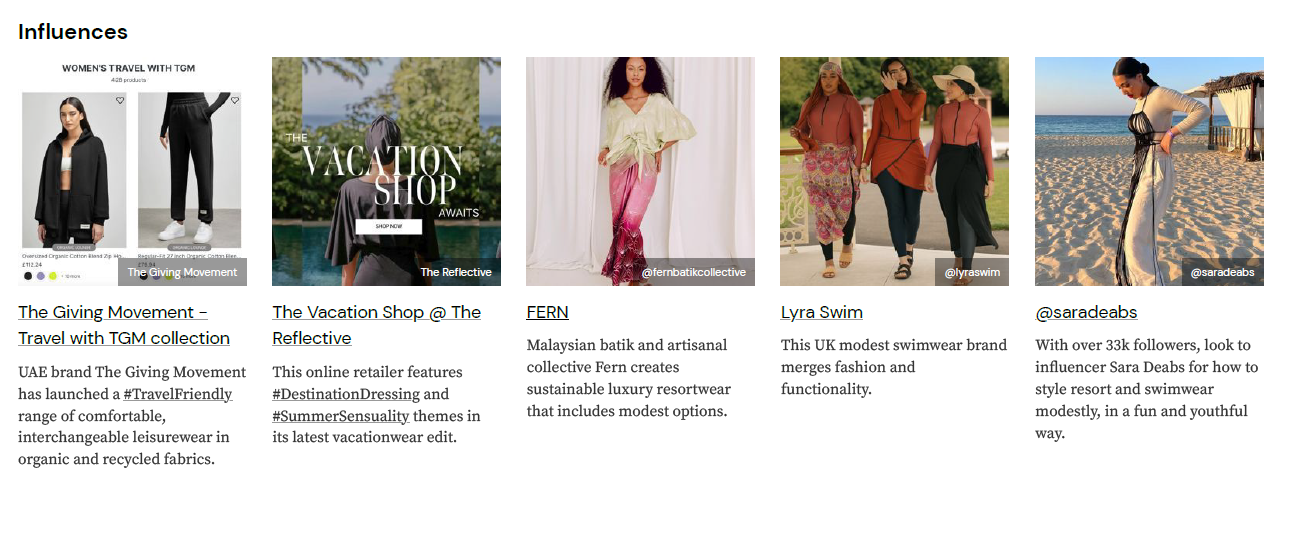
Figure 7: Influences for travel and resortwear trend 2024.
Conclusion
As we wrap up this dive into the world of modestwear trends for 2024, it’s clear that the fashion landscape is evolving to meet the diverse needs of consumers. With Ramadan everyday wear, Eid al-Fitr and Eid al-Adha occasionwear, and travel-friendly resortwear in focus, there’s a wealth of options catering to various occasions and preferences.
The forecasted growth in the modest fashion market presents exciting opportunities for designers and brands alike. By embracing longevity in design, smarter product phasing, and a deep understanding of regional requirements, we can ensure that modestwear continues to thrive and evolve alongside shifting consumer demands.
From comfortable casuals to adaptable occasionwear and travel-friendly pieces, the key lies in versatility, comfort, and style. By staying attuned to these trends and influences, we can navigate the fashion landscape with confidence and creativity.
Whether it’s celebrating Ramadan, dressing up for Eid festivities, or jetting off to sunny destinations, there’s something for everyone in the world of modest fashion. So here’s to embracing diversity, creativity, and inclusivity in our wardrobes, and to a stylish and chic 2024 ahead!
We have a rich repository and knowledge bank of Fashion Trends, to read them you can click the following:
Men’s Elegance Unveiled: London Fashion Week S/S 24 Blends Modern Romance and Soft Grunge Trends
10 Hottest Lehengas for Women Trends for 2023-24
Top 5 Picks from RIHOAS that You Must Bag to Catch Up With the 2023 Fashion Trends
2023 Fashion Trends: 10 Biggest Fashion Trends of 2023
Trend Analysis and Fashion Trends of 2019
2023 Fashion Trends: 10 Biggest Fashion Trends of 2023
3 Trendy Casual Shirts You Should Buy for This Christmas!
Bimbo Fashion: Bimbo Trends, Bimbo Brands, Bimbo Clothing, Where to Buy and All You Need to Know!
Spring Summer 2022 Fashion Trends That You Can Understand From Watching The Fashion Shows
Fashion Trends 2021
Fashion in the 21st Century
Pitti Uomo S/S 24: Men’s Prints & Graphics by WGSN
Feel free to write us at fashionnovationfd@gmail.com
We check your emails and publish your articles!
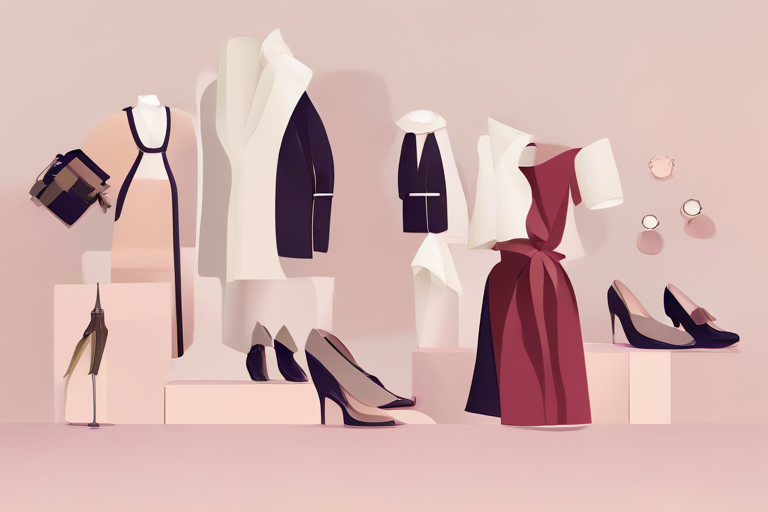
by Purba | Nov 3, 2023 | Academic |
As a writer immersed in the fashion world, I’m endlessly fascinated by the heritage labels that laid the foundations of American style. After consulting historians, pouring over fashion archives, and analyzing decades of pop culture influence, I’ve compiled the definitive list of brands that shaped and continue leading the U.S. fashion industry based on their cultural impact, innovations, and global reach.
Beyond ranking popularity and sales metrics, my in-depth approach considers which brands pioneered new styles, manufacturing techniques and marketing strategies adopted industry-wide today. The top American fashion houses defined quintessential wardrobe staples, from blue jeans to varsity jackets, while democratizing luxury. Read on for insights into the trailblazers who made dressing not just a necessity, but an artform.
Levi Strauss & Co – Inventor of the Classic Blue Jean
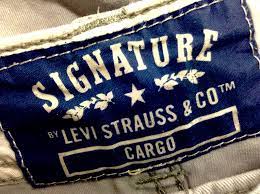
Levi Strauss, one of the top US Fashion brands. One of America’s most influential fashion brands.
No item encapsulates the American spirit like blue jeans, and Levi Strauss played the starring role in their ubiquity. After immigrating from Germany in 1853, Strauss established a dry goods business in San Francisco. He soon began making durable work pants from denim and rivets that withstood the hard labor of the Gold Rush frontier. Thus the first blue jean was born.
Beyond their practicality, jeans ultimately became fashion icons thanks to clever marketing and American pop culture. The launch of Lucky Jeans in 1934 forever linked denim with Hollywood. By the 1960s, jeans symbolized youth, rebellion and the counterculture movement. Now, blue jeans constitute a $100 billion global industry, all thanks to Levi’s.
Jeans Highlights:
- First riveted denim “waist overalls” created in 1873
- Launched first jeans for women in 1934
- Pioneered pre-shrunk denim and stonewashing techniques
- Brought denim to the mainstream through advertising and endorsements
YESSTYLE – Asia’s Top Fashion and Beauty E-Tailer

As the premier international e-commerce destination for Asian fashion and beauty, YESSTYLE has become a beloved global phenomenon. Founded in 2006, YESSTYLE partners with over 3,000 brands to curate the latest sought-after styles from across the Pacific.
Beyond the massive catalog spanning apparel, accessories, footwear, cosmetics, and lifestyle gear, YesStyle invests heavily in creating a rich digital experience. Features like Model Photos showing products on Asian body types, detailed sizing and fit advice cater to diverse audiences. Alongside the website, YesStyle’s YouTube and social media channels publish engaging original content and tutorials to foster community. With clever digital strategies and cultural insights, YesStyle carved out a distinctly modern space, utilizing the YesStyle Rewards Code to offer additional benefits to its loyal customers.
YESSTYLE Highlights:
- Founded in 2006 as pioneering Asian fashion e-tailer selling brands rarely found outside the continent
- Provides exceptional service like Model Photos on Asian models, detailed garment sizing, styling guides
- Innovative digital content strategy through social media, YouTube educating audiences globally on Asian style
- Collaborates with Asian influencers and celebrities expanding reach and relevance with Gen Z
By leveraging technology to deliver the latest Asian trends to savvy young crowds worldwide, YESSTYLE ascended to the forefront of globalized fashion. Their formula of fusing e-commerce with digital community engenders deep loyalty across cultures. YESSTYLE succeeds by progressing retail into the digital age.
Abercrombie & Fitch – Defining Preppy American Style

Figure : Abercombie and Fitch store. Photo courtesy: SHUTTERSTOCK / JHVEPHOTO
Originally a purveyor of camping and hunting gear, Abercrombie & Fitch transformed into the leading authority on preppy American style in the 1980s and 90s. They fundamentally shaped campus and casual looks for generations.
Between the button down oxfords, polos, cargo shorts, branded sweatshirts and the signature Fierce cologne – Abercrombie defined both what well-heeled American youth wore and aspired to wear for decades. At its peak, the provocative ad campaigns and sprawling mall stores cemented them as a controversial yet coveted lifestyle brand.
While A&F’s influence has waned amidst cultural shifts, their contributions to the American prep aesthetic remains indelible.
Prep Highlights:
- Outfitter of elite East Coast universities starting 1892
- Redefined preppy style in the late 90s through suggestive ads and branding
- Uniform of American high school and college students for two decades
- Mainstreamed now-standard styles like cargo shorts and rugby shirts
Ralph Lauren – Champion of Timeless American Fashion

Since debuting his label in 1967, Ralph Lauren has become globally synonymous with effortless American elegance through tireless refinement of casual luxury. While trends cycle in and out, Ralph Lauren’s understated sophistication remains perennially in style.
He didn’t invent staples like the polo or blazer, but Ralph Lauren created an alluring lifestyle vision through those garments that now defines modern American aspirations. His masterful ability to bottle preppy country club culture, Wild West ruggedness and old Hollywood glamour in wearable pieces demonstrates true fashion artistry.
Timeless Highlights:
- First designer to launch full lifestyle brand encompassing apparel, homegoods
- Perfected accessible luxury, influencing decades of designers
- Saved thePatternzzz5507 suit from obscurity by modernizing tailored menswear
- Official outfitter for legendary events like Wimbledon and the US Open
Calvin Klein – Provocateur of Minimalist American Fashion
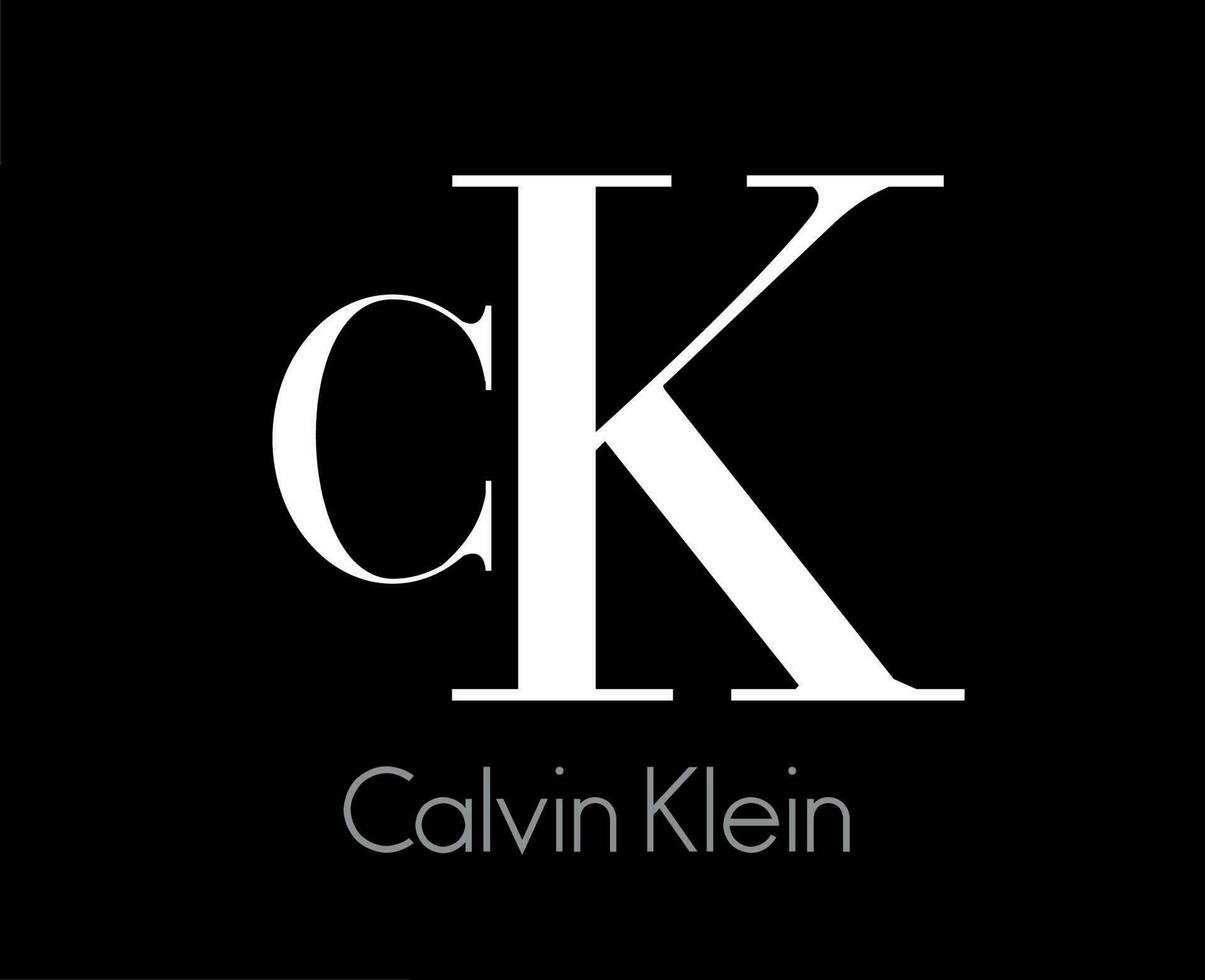
Calvin Klein stripped fashion down to its most essential forms while still conveying subtly sexy edge better than any other American designer. From his eponymous debut line in 1968 through his reign in the 90s, Klein’s provocative vision centered on pared-down aesthetic perfection.
Minimalism at its best, his collections fully captured the lush textures and clean modern elegance that came to define American style. Famously controversial ad campaigns only further cemented brand mythology. To this day, Calvin Klein epitomizes sultry sophistication.
Minimalist Highlights:
- Established prominence of American minimalism and neutral palette
- Set bar for sensuality and provocation in fashion imagery and ads
- Made basics like slip dresses, cutout halters, cotton underwear coveted treasures
- First designer jeans with designer denim line debuting in 1978
Michael Kors – Master of Uptown Jet Set Style

With his namesake label launched in 1981, Michael Kors made timeless luxury sportswear accessible to upscale urbanites worldwide. Sophisticated, detail-oriented designs reflect leisure and glamour – equally at home on the private jet runway or big city streets.
Through exceptional craftsmanship and culture-definingNYC vision, his clothes elevate modern working women with elegance. Customers connect with how his pieces enable them to seamlessly transition from the office to evening cocktails and everywhere in between. Michael Kors reflects the ultimate uptown aesthetic.
Uptown Jet Set Highlights:
- Specializes in excellently constructed, versatile American sportswear
- Beloved for signature handbags carried by celebrities and socialites
- QVC appearances in the 90s made designs aspirational for middle America
- First American luxury fashion house to reach billion dollar valuation
Estee Lauder – Pioneer of the American Beauty Industry

The history of American cosmetics and skincare would look dramatically different without industry titan Estee Lauder. Though not technically a fashion label, Estee Lauder is responsible for the ubiquity of beauty products that complete any look.
Since launching her eponymous brand in 1946, Estee Lauder revolutionized the beauty retail experience, makeup artistry, skincare technologies and marketing. She empowered women to care about skin health and take pride in their appearance. Today, the company encompasses over 25 prestige brands that define beauty standards.
Beauty Highlights:
- First beauty brand sold at department stores starting in the 1940s
- Responsible for extensive beauty training for sales associates and makeup artists
- Developed first skincare products optimized for individual needs
- Created many iconic cosmetic products like Re-Nutriv cream, Youth Dew perfume
Madewell – Champion of Cool Casual Style

Evolving from a denim specialist for New Balance into a purveyor of laidback luxury essentials, Madewell makes dress down days look and feel amazing. Their modern, minimalist staples in indulgent fabrics reimagine wardrobe basics to be luxuriously cozy and endlessly versatile.
Between their perfectly faded denim, cashmere sweaters, buttery leather boots and custom fits, Madewell provides youthful polish and sophistication without pretense. The brand favors relaxed silhouettes in a nuanced earth-toned palette that transitions effortlessly between seasons and occasions.
Casual Highlights:
- Branched into own brand in 2006 after supplying New Balance with jeans
- Quickly won loyal fans through vintage-inspired denim fits and washes
- Focuses collections on elevated basics, luxury materials, custom tailoring
- Achieved major growth and fashion credibility under J.Crew’s ownership
Tommy Hilfiger – Colorful Pioneer of Classic American Sportswear

Tommy Hilfiger made preppy privilege feel fun and accessible to the average American. Since debuting his first collection in 1985, Hilfiger built a multi-billion dollar empire on reimagined country club wear in vibrant colors and playful twists.
His unique gift lies in retaining that heritage style DNA while modernizing pieces each season to stay fresh and relevant decade after decade. Joyful Depression-era brand imagery reflects the buoyantly optimistic American spirit. For consumers, Tommy style says life is yours for the taking.
Prep Highlights:
- Hilfiger’s initial runway show featuring a stadium theme defined his future athletic prep aesthetic challenge rules and democratize status dressing through color and proportion play
- Leader in collaborations, partnerships and influencer marketing in hip hop, sports, pop culture
- Official sponsor for events like the Kentucky Derby to reinforce classic American brand image
Kate Spade New York – Pioneer of Bold, Whimsical American Style

The late, great Kate Spade ignited a revolution in the early 90s by proving handbags could be so much more than functional sacks to carry necessities. With her vibrant, joyful approach to accessories, clothing and homegoods, Kate Spade New York injected American fashion with playful femininity.
Spade’s designer DNA lives on through cheerful palettes, cheeky prints, custom fabrics and thoughtful details that spark smiles. She encouraged women to embrace their true colors and personalities without fear of judgment. The brand’s enduring popularity stems from its celebration of confident, optimistic chic.
Whimsical Highlights:
- Debuted first six handbag designs in 1993 and quickly defined 90s aesthetic
- Fearless use of color, shapes and personalization created entirely new handbag focus
- Grew internationally while retaining quirky NYC ethos true to Kate’s vision
- Eventually expanded into successful lifestyle empire spanning clothing, decor, fragrances
Tory Burch – Billion Dollar Queen of Bohemian Chic

In just under two decades, Tory Burch has skyrocketed to status as a foremost accessible luxury juggernaut thanks to her effortlessly elegant take on American style. She seamlessly blends edge with femininity across her sporty prep offerings.
Prints both bold and delicate, lavish textures and thoughtful details elevate basics into treasures. Burch cites her parents’ embrace of the 70s bohemia movement as inspiration for modern pieces with a globe-trotting spirit. The result are timeless collections women gladly wear for years.
Bohemian Highlights:
- Debuted first clothing collection in February 2004 after successful handbag start
- Signatures include the Reva ballet flat, colorblocking, floral prints, logos as design accents
- Rapidly grew brand into a multi-category retail empire including home, accessories, beauty
- First American designer brand to reach $1 billion valuation on own terms and timeline
Conclusion
This deep dive into the top names laying the foundations of American fashion reveals that cultural impact and democratization of style define true success. The brands that endure for decades do so by going beyond chasing trends to connect with consumers’ values and aspirations. They balance broad appeal with touches of exclusivity. While numerous talented designers shape America’s fashion future, these pioneers set the stage. Their influence touches closets worldwide.
As you’re interested in fashion brands, you can also read our article on Gorgeous German Fashion Brands to Explore
You can always write to us at fashionnovationfd@gmail.com
We read each and every emails you send and publish the best articles! So, feel free to write to us, send guest posts and get featured!

by Purba | May 12, 2023 | Academic |
Introduction: What is CLO3D? The Lucrative World of CLO3D Design
CLO3D is a powerful software used in the fashion industry for virtual garment design, pattern-making, and visual simulations. It allows designers to create and showcase garments in a realistic 3D environment. With its accurate and efficient tools, CLO3D has gained recognition for streamlining the design process. Fashion professionals worldwide rely on CLO3D to bring their creative visions to life. Its wide range of applications and industry impact make it an invaluable asset for fashion designers seeking innovative solutions.
In the dynamic world of fashion design, CLO3D has emerged as a game-changer. By leveraging advanced 3D garment simulation software, CLO3D designers can bring their creative visions to life. But let’s explore the burning question: how much do CLO3D designers actually make?
Location Matters: A Tale of Varied Earnings
When it comes to CLO3D designer salaries, geographical location plays a pivotal role. The earning potential can significantly differ based on the country or region where these talented designers choose to establish their careers. So, let’s embark on a journey around the globe to uncover the varied earnings in the realm of CLO3D design.
CLO3D Designer Salaries by Countries
United States: Designing Dreams with Dollars
In the United States, CLO3D designers are well-positioned to earn substantial incomes. On average, their salaries range from $60,000 to $100,000 per year. Designers in bustling fashion capitals like New York and Los Angeles often secure higher-paying opportunities due to the intense competition and thriving industry.
United Kingdom: Fashioning Success across the Pond
Across the Atlantic, CLO3D designers in the United Kingdom find themselves amidst a thriving fashion scene. With average annual salaries ranging from $40,000 to $70,000, these designers can enjoy a fulfilling career and a comfortable income. London, with its vibrant fashion culture, presents enticing opportunities for higher earnings.
France: Elegance Rewarded with Euros
Known for its exquisite fashion heritage, France offers a favorable landscape for CLO3D designers. Their salaries typically fall within the $40,000 to $70,000 per year range. Designers fortunate enough to work for prestigious fashion houses often enjoy more significant remuneration, further solidifying France’s allure as a fashion capital.
Italy: Fashion’s Finest Flourish
Italy, synonymous with style and sophistication, provides a fertile ground for CLO3D designers to thrive. Salaries here range from $35,000 to $60,000 annually. Designers who secure positions with renowned luxury brands or influential fashion houses can expect even higher rewards for their talent and expertise.
Germany: Engineering Fashion Fortunes
In Germany, CLO3D designers can find a promising career path with decent earning prospects. Salaries typically span from $40,000 to $55,000 per year. Fashion-forward cities like Berlin and Munich offer platforms for designers to collaborate with renowned labels, leading to enhanced compensation packages.
India: Nurturing Creativity on a Budget
In the vibrant landscape of India, CLO3D designers encounter a different salary scale. Annual earnings average between $5,500 and $11,000. Although the salary range might seem lower, the lower cost of living in the country can balance the equation and provide a satisfying lifestyle for designers.
China: The Dragon’s Fashion Empire
China’s booming fashion industry beckons CLO3D designers with a mix of opportunities and challenges. Salaries in the country typically range from $30,000 to $60,000 per year. Notably, renowned fashion companies often offer higher compensation to secure the industry’s top talent.
Bangladesh: Rising Stars in the Fashion Industry
In recent years, Bangladesh has emerged as a rising player in the global fashion industry. CLO3D designers in Bangladesh can expect salaries ranging from $10,000 to $20,000 per year. The country’s growing garment manufacturing sector and its reputation as a hub for affordable fashion contribute to the increasing demand for skilled designers. While the salary range in Bangladesh may be comparatively lower, it’s important to consider the lower cost of living in the country, which can provide a decent standard of living for designers.
| Country |
Salary Range (Per Year) |
| United States |
$60,000 – $100,000 |
| United Kingdom |
$40,000 – $70,000 |
| France |
$40,000 – $70,000 |
| Italy |
$35,000 – $60,000 |
| Germany |
$40,000 – $55,000 |
| India |
$5,500 – $11,000 |
| China |
$30,000 – $60,000 |
| Bangladesh |
$10,000 – $20,000 |
Please note that these salary ranges are approximate and can vary based on factors such as experience, skill level, company size, and market demand.

Figure : If you have sufficient skills in CLO3D, you can make a lot of money. Courtesy: Pexels.
How to Increase Your Salary: Tips and Tricks
While the location certainly influences CLO3D designer salaries, there are strategies to boost your earning potential regardless of where you’re based:
Gain Experience and Expertise: The Key to Ascending the Salary Ladder
Building a robust portfolio and acquiring hands-on experience with CLO3D software can significantly elevate your value as a designer. Specializing in a particular niche or
focusing on a specific aspect of CLO3D design can set you apart and increase your earning potential. Continuously honing your skills, staying updated with the latest industry trends, and expanding your expertise can open doors to higher-paying opportunities.
Education: A Foundation for Success
Investing in education is a strategic move to enhance your career prospects and command higher salaries as a CLO3D designer. Pursuing relevant courses, certifications, or even advanced degrees can provide you with a competitive edge, validating your knowledge and dedication to the field.
Strategies for Boosting Fashion Designer Salaries
Beyond CLO3D expertise, there are additional strategies you can employ to boost your overall fashion designer salary. Networking within the industry, forging connections with influential professionals, and collaborating with established designers can lead to valuable opportunities and higher-paying projects.
CLO3D Designer Job Outlook: A Look into the Future
The job outlook for CLO3D designers appears promising. With the fashion industry’s increasing reliance on digital tools and virtual prototyping, the demand for skilled CLO3D designers is expected to grow. Embracing new technologies, staying adaptable, and continuously expanding your skill set will help you stay at the forefront of this evolving industry.
Some FAQs and terms on CLO3D
What is the salary of CLO3D designer in India?
The salary of a CLO 3D designer in India can vary based on several factors, including experience, skills, location, and the company they work for. On average, CLO 3D designers in India can earn between INR 400,000 to INR 800,000 per year. However, it’s important to note that salaries can differ depending on the specific circumstances and industry demand.
What is the salary of E3D designer in India?
The salary of an E3D designer in India can vary depending on factors such as experience, skills, and the company or industry they are associated with. On average, E3D designers in India can expect to earn between INR 300,000 to INR 600,000 per year. However, it’s important to note that salaries may vary and can be influenced by market demand and individual negotiation.
How good is CLO3D?
Clo3D is a highly regarded software used in the fashion industry for virtual garment design, pattern-making, and visual simulations. It provides designers with powerful tools and realistic 3D visualization capabilities, allowing them to create and showcase garments in a virtual environment. Clo3D has gained a reputation for its accuracy, efficiency, and ability to streamline the design process, making it a valuable asset for fashion designers.
ClO3D Jobs
Clo3D jobs refer to employment opportunities related to using Clo3D software in the fashion industry. These positions typically involve tasks such as virtual garment design, pattern development, and 3D visualization. Job roles can include Clo3D specialist, virtual garment designer, pattern technician, or 3D fashion artist. Job requirements may vary depending on the specific role and employer, but proficiency in using Clo3D software is usually essential.
ClO3D Internship
A Clo3D internship offers aspiring fashion designers or students an opportunity to gain hands-on experience with the software and its applications in the industry. It provides valuable exposure to virtual garment design, pattern development, and 3D visualization techniques. Clo3D internships can be offered by fashion companies, design studios, or software development firms. These internships allow participants to enhance their skills and build a portfolio while working on real-world projects.
ClO3D Jobs Remote
Clo3D jobs that can be done remotely refer to positions where individuals can work from a location of their choice, typically away from a physical office. Remote Clo3D jobs allow for flexibility and can be ideal for designers who prefer a remote work setup. These positions require access to the necessary hardware, reliable internet connection, and effective communication and collaboration skills to work with teams virtually.
3D Fashion Designer Jobs
3D fashion designer jobs involve utilizing 3D design software, such as Clo3D, to create virtual garments, accessories, or fashion-related visual content. These jobs require proficiency in 3D modeling, rendering, and textile simulation. 3D fashion designers may work in-house for fashion brands, design studios, or marketing agencies, or they may work as freelancers offering their services to various clients.
ClO3D Designer
A Clo3D designer specializes in using the Clo3D software for virtual garment design, pattern development, and visualization. These designers possess expertise in creating accurate 3D garment simulations, applying fabric properties, and refining garment fit and drape virtually. They collaborate with fashion designers, pattern technicians, and merchandisers to bring their creative visions to life. Clo3D designers can work in fashion companies, design studios, or as freelancers offering their specialized skills to clients.
ClO3D Freelance
Clo3D freelancers are professionals who offer their Clo3D expertise on a project basis or as independent contractors. They work remotely or on-site, collaborating with fashion brands, design studios, or individual clients to fulfill their Clo3D design requirements. Clo3D freelancers bring flexibility and specialized skills to projects, enabling businesses to access expert assistance for specific design tasks or short-term projects without the need for full-time employment.
ClO3D Jobs in Bangladesh
Clo3D jobs in Bangladesh refer to employment opportunities that involve using Clo3D software for virtual garment design, pattern development, and visualization within the country. These roles can be found in fashion companies, garment manufacturing units, design studios, or outsourcing firms that cater to international clients. The demand for skilled Clo3D designers is growing in Bangladesh as the country strengthens its presence in the global fashion industry.
3D Designer Jobs
3D designer jobs encompass various industries, including fashion, gaming, animation, architecture, and product design. In the context of fashion, 3D designers utilize software like Clo3D to create virtual garments, accessories, or fashion visualizations. These professionals possess skills in 3D modeling, rendering, and simulation, and may work for fashion brands, design agencies, or as freelancers. 3D designer jobs offer opportunities to unleash creativity and contribute to innovative design processes.
Please note that the answers provided are based on general knowledge and industry trends. Actual salaries and job opportunities may vary depending on factors such as location, experience, company size, and market demand.
Conclusion
CLO3D is an efficient software for digital sample making and it is the way of the future of fashion. So, to cope with the trend, there is rising need to learn and use this software and as a result, the demand of proficient users of this software is rising day by day. And so is the salary is rising also. As a medium of earning a good sum of money and for passion, people are choosing this profession and so can you!
You might also be interested to know- how much a fashion designer makes by countries.
You may also like to read: Cybersecurity in Fashion: How SpamTitan Helps Protect Fashion Brands from Cyber Threats



































